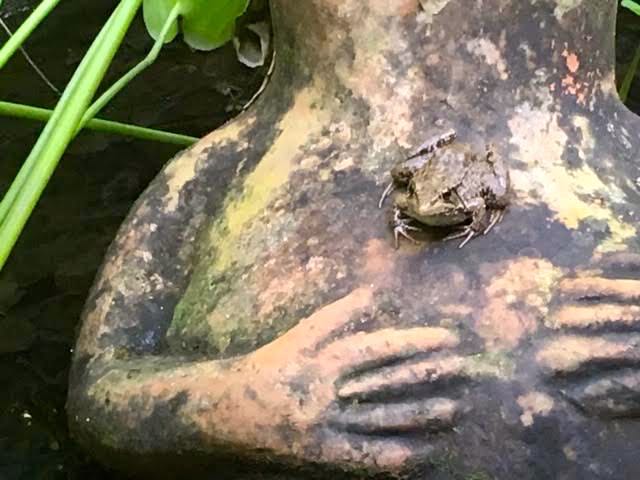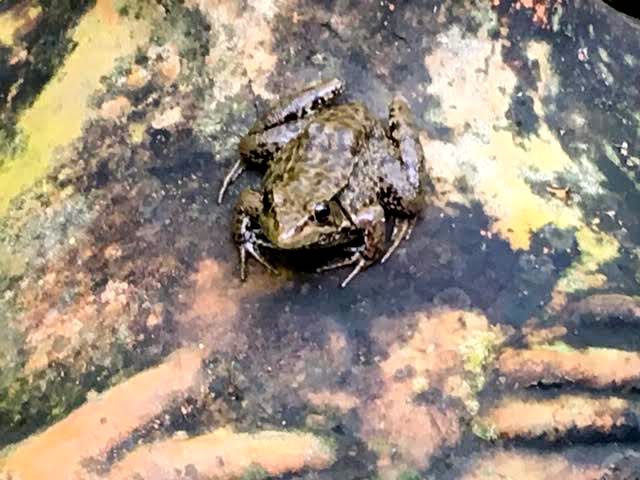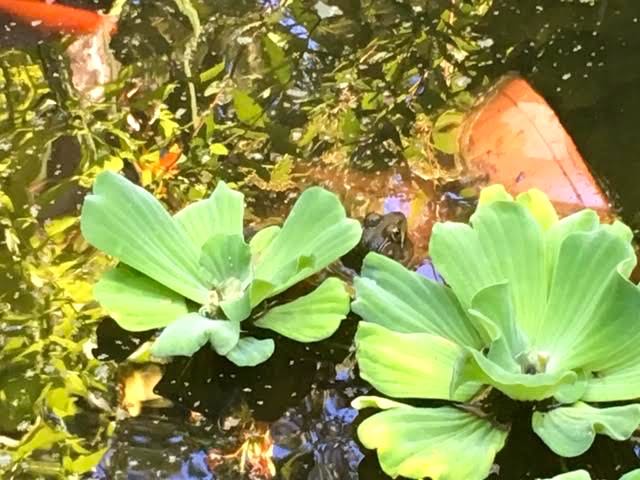Froggy Bottom Pond Bullfrog
/The bottom of my hill frog pond with goldfish. (Photo by Charlotte Ekker Wiggins)
Froggy Bottom Pond Bullfrog
When I used to commute to Washington D.C., I spent a lot of time on the Metro rail subway, which inspired the name of this garden room, Froggy Bottom. Sitting at the lower end of the limestone hillside slope between the road and my garage, Froggy Bottom hosts two small ponds built from the holes made when the driveway was moved and concrete removed. It was easier, and less expensive, to make the ponds than to try to fill the holes with concrete.
The two ponds are small in size but big in use. Besides goldfish, the ponds are spring nurseries for a number of Missouri frogs. The constant turnover inspired this unique handmade quilt, Froggy Bottom handmade quilt.
In summer, dragonflies flit around the spearmint lining the west side of the pond.
Honey bees collect water from the water lettuce I add every year so they can safely access the water. Periodically I find birds taking baths under the small waterfalls.
As I was feeding the goldfish this one afternoon, I found a new pond resident sitting on the chest of my very old clay frog.
My clay ceramic pond frog now has a friend. (Photo by Charlotte Ekker Wiggins)
The next question was, what kind of Missouri frog is this?
Earlier this spring, I counted 23 tadpoles growing legs before they became land animals but I didn’t know what species they were.
Can you identify the species with this photo?
See the tiny tadpole now turned frog on the ceramic frog leg? (Photo by Charlotte Ekker Wiggins)
The tiny frog looked very much like the adult frogs hanging around the two ponds. Here two of the adult frogs were sitting on the rocky ledge.
Two frogs sit on the rocky ledge on the right. (Photo by Charlotte Ekker Wiggins)
So back to our frog identification, can you identify this frog?
Can you identify this Missouri frog? (Photo by Charlotte Ekker Wiggins)
A friend of mine suggested looking behind the eyes and identifying a saucer shape that is indicative of the Missouri bullfrog.
According to Missouri Department of Conservation, the bullfrog is Missouri’s largest frog; it ranges from green to olive to brown. The back may have small brown spots or dark, indistinct, irregular blotches. The hind legs are marked with distinct dark brown bars. The belly is white, and the throat may have some gray mottling. The external eardrum is large and round. On adult males this tympanum is much larger than the eye; on females, it’s about the same size as the eye. This species has been known to reach 8 inches from snout to vent. Call is a deep, sonorous “jug-a-rum, jug-a-rum” that can be heard from half a mile away or more.
I know I have a bullfrog in these ponds because I hear it when I walk by.
Well, it stops croaking when it is disturbed but I can hear one when I open my front door. It’s a wonderful sound to hear.
Look at the side of the head to identify the disc behind the eye. (Photo by Charlotte Ekker Wiggins)
Frogs are good additions to a garden, they are part of the cycle of life consuming flies, mosquitos, dragonflies and other insects. Frogs are carnivorous so as the frog gets larger, so do their meals.
You can see the round disc behind the eyes better in this photo. (Photo by Charlotte Ekker Wiggins)
Now I know I have not only Missouri tree frogs but now a bullfrog.
Or maybe another twenty one.
Charlotte


















